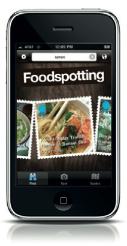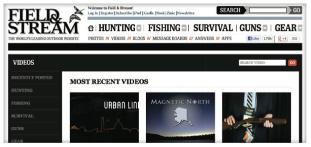Are you Overloaded? Lowe & Partners finds "Personal Filtration" trend driving a new Curation Nation. - Steve Rosenbaum

There is a growing awareness of the limitations and impersonal nature of algorithmic search. People no longer want to rely on passive computing, but want to build ways of navigating and accessing the information available to them.
Curation, the act of organizing and maintaining a collection of information or artifacts, has emerged as a key trend in the 21st century. It is a modern solution to information overload, thanks to its ability to filter information and reduce the anxiety created by infinite choice.
The extent of the deluge of information now available to people in a multi-screen world can seem overwhelming. According to a 2012 report from Business Week, the average person receives 63,000 words of new information every day, the length of the average novel. With so much information currently accessible, curation has become an essential skill for surviving the modern world.
In essence curation is about selection and filtering: a way to present and access the taste of others. This is the insight at the heart of blog culture, music curation services like Spotify and 'visual scrapbooking' such as Pinterest.
Now Everyone's a Curator
Once only used in the context of art galleries and museums, the idea of 'curation' has gradually migrated into the mainstream as a term to describe a new approach to collation and self-expression fuelled by digital lifestyles.
The success of curation in retail highlights the limitations of traditional algorithmic selection. People instinctively prefer to trust individuals rather than computers for guidance on what to like and buy.
As the 'sharing ecosystem' devalues content, curation solves that problem by finding a new way to make information feel special. Dean Fankhauser, co-founder of Nuji - the leading social commerce platform - explains: "Discovering things is more interesting through people than it is through algorithms. I think that a great opportunity in social commerce lies in enabling you to connect to people with similar tastes."
Many are already calling curation the new search. After 'sharing' and 'social', 'curation' is the next level of online behaviour, which is focused around special interests.
Curation is being used to evolve online and bricks and mortar retail spaces, from 2D commoditized selections into 3D expressions of a specific lifestyle or personal vision.
Curators are both collectors and creators. Capturing the zeitgeist of the web, and knitting together images, text, links, and video along with their own original content to create a focused, contextually relevant editorial for an overloaded world.
The Rise of Internet-Based Social Networks
More and more people are adopting interest-based social networks, which allow them to express their interests and offer authentic, high value connectivity with people with similar tastes.
The numbers speak for themselves. Pinterest, the increasingly popular virtual pinboard, crossed 10m monthly unique users in the US in January 2012, achieving 8 digits' worth of monthly uniques faster than any site ever. According to Silicon Valley uber-investor Ron Conway, Pinterest is growing as fast as Facebook 5 years ago and is now responsible for referring more direct traffic to retailers than Facebook.
Other examples include the Foodspotting app which works as a user-generated guide to local restaurants, using geolocation to show uploaded photos of nearby food dishes, which are rated by the public. Thumb is an opinion-based social network which lets users share their opinions in real time with friends and connect with people who have similar opinions to them.
real time with friends and connect with people who have similar opinions to them.
Common Interests are the New Demographics
The rise of curation will make it much easier for marketers to target people by lifestyle demographics, which in turn makes advertising much more efficient and effective.
Once, reach and scale were all that counted. Now depth of engagement is what everyone, users and brand partners alike, is looking for and it is common interests which are providing the solution. Curation allows people to express and record their tastes and interests, and connect with other like-minded individuals.
Interest-based social networks, such as Pinterest, allow marketers to cluster consumers by common interests and build more eloquent profiles of their target audiences. They also help to identify brand advocates, key influencers, and new ideas for engagement. Gayle Fuguitt, Vice President of Global Insights at General Mills explains: "We knew we couldn't just look at consumers by their demographics anymore - we needed to look at them in terms of their lifestyles."
Scrapbooking social media networks have created a new wave of curator consumers who are becoming a powerful commercial force, thanks to their daily recommendations of products, services and favorite brands.
The past year has seen a huge rise in the popularity of social fashion sites such as Polyvore (over 17 million unique site visits per month), Fancy, Svpply and Lyst. These are variations on a theme of lifestyle curation, which enable users to benefit from 'handpicked' selections of tastemaker curators.
According to Jess Lee, CEO of Polyvore: "We're democratizing fashion. We're giving people, not fashion editors, the voice to define taste."
Monetizing User-Generated Curation
In the future, rewarding people for their curation skills will be considered the norm. Social curation sites are already increasingly the data generated by social scrapbooking and rewarding users.
Joe Einhorn, Founder and CEO of Fancy asks the question: "Why don't we compensate you for curating or marketing for us? It makes total sense to me. I think it's the future of the Internet - people are going to have to get something out of these services."
Social curation site Lockerz offers rewards to its users for sharing content, which encourage them to make purchases via the site. Nuji, a social network launched in 2011, enables members to create and earn rewards though their own virtual stores by selecting items and saving them to wish lists. These are presented as a personal online shopping page and link directly to the e-commerce page for the item. Other examples include Vocé magazine, a social-commerce experiment from a Brazilian department store, which enables customers to create and curate their own online stores. These generate commission for the curator when 'friends' purchase products at their curated stores.
The Future of Curation for Brands:
Continuing the trend for collaborations between mainstream fashion brands and more edgy up-and-coming designers, brands are now recruiting high-profile bloggers and curators who are being recognized for their unique personality. The new curator collaborations provide a more personal taste and experience for people to identify with and buy into. Increasingly it is those individuals who have built a name and following in the blogosphere who are being tapped into by brands for their unique voice.
In 2011 H&M launched a collaboration with fashion blogger Elin Kling in its native Sweden, whilst Kate Spade New York released a capsule collection designed by the esteemed French fashion blogger Garance Dore. Sofia Jegerborn, marketing manager of H&M Sweden explains: "It feels great to be able to offer our Swedish customers an exclusive collection by Elin Kling. As one of Sweden's biggest fashion profiles, Elin fits our fashion-conscious customer perfectly." Mat Bickley, founder of digital marketing agency Joyn points out: "With 15 of the top 20 brand influencers being personal bloggers, we're watching paid media and PR rapidly lose their power to dictate trends and influence people."
Kate Spade New York released a capsule collection designed by the esteemed French fashion blogger Garance Dore. Sofia Jegerborn, marketing manager of H&M Sweden explains: "It feels great to be able to offer our Swedish customers an exclusive collection by Elin Kling. As one of Sweden's biggest fashion profiles, Elin fits our fashion-conscious customer perfectly." Mat Bickley, founder of digital marketing agency Joyn points out: "With 15 of the top 20 brand influencers being personal bloggers, we're watching paid media and PR rapidly lose their power to dictate trends and influence people."
Brands can use curation to eliminate choice anxiety by offering a more relaxed but inspired experience.
As Krista Garcia, eMarketer analyst points out: "Curated ecommerce is becoming recognized by both retailers and shoppers for its simplicity and ability to help fill an online void." Changing curated selections gives consumers a shopping experience that is stimulating, entertaining and therapeutic at the same time. CoutureLab offers a range of rare and unusual, exquisitely made one-off fashion and lifestyle items sourced from around the world, presenting the very opposite of a commoditized offering. Many companies are now offering curated package subscriptions such as Stylistpick, which sends users a tailored selection of items each month, depending on the outcome of a questionnaire on the user's personal style. Fancy have launched a monthly subscription service called the 'Fancy Box' which includes the most liked items selected by its 2 million users.
The Future of Curation for Retail Spaces:
Physical retail spaces are also gradually adapting a more curated approach by expressing a specific lifestyle or personal vision - embracing quality and selection over quantity. The public are rejecting 'cookie cutter' retail and seeking greater diversity.
Like a gallery exhibition, curated stores have original 'non-commoditized' offerings that create intrigue, surprise and encourage an element of discovery.
Borrowing language from the art world elevates this type of retail experience and gives the space a more personal feel. People want retail experiences that are personal, unique and quirky. The Late Night Chameleon Café (LN-CC) in East London is an expertly curated concept boutique fitted with sculptural elements and stocked with exclusive world-class fashion items, rare books and vintage vinyl. It's not just a store, it's an experience. John Skelton, Co-owner of LN-CC explains: "It doesn't matter if visitors don't buy. The concept is not just focused around a store, it's more an overall feeling and lifestyle that we live and wanted to share with anyone who might be interested."
More retailers are realizing the appeal of offering people less choice but greater quality, focusing on limited product ranges that highlight and demonstrate a unique passion and expertise.
Barry Schwartz, Author of 'The Paradox of Choice' explains the negative effect of excess choice: "As the number of choices grows further, the negatives escalate until we become overloaded. At this point, choice no longer liberates, but deliberates."
At The Meadow shops in New York and Portland, former art historian and museum worker Jennifer Bitterman has condensed and curated the stores' offering down to just four items: salt, chocolate, flowers and cocktail bitters.
A similar but more personalized approach is offered by Trunk, a bespoke clothing service for men, offering designer clothing to customers without any of the hassles of shopping in stores or online. Men tell Trunk Club their style, fit, and size preferences, and the company ships them a handpicked selection of clothes.
The Future of Curation for Publisher Video:
As mainstream print publishers make the move to mobile and web publishing, curation has become a central topic of conversation among publishers. Do readers expect all of the content on quality content sites to be original, or can the editorial expertise of a magazine help readers filter the overwhelming nature of raw web content.
For more and more publishers, video curation has been a solution that leverages brand value, keeps the cost of video content creation to a minimum, and provides valuable and contextual experiences for visitors. Bonnier Publication's Field and Stream.com Has embraced video curation across its site: www.fieldandstream.com.
experiences for visitors. Bonnier Publication's Field and Stream.com Has embraced video curation across its site: www.fieldandstream.com.
By seamlessly mixing content from their own produced videos, user submitted content, and videos discovered across the web, Bonnier has created an immersive video experience that readers return to. Curation is gaining hold across categories. At New York Magazine, their fashion brand "The Cut" uses curated video extensively.
With behind the scenes video, runway content, model interviews, and fashion brand profiles. NYmag.com seamlessly mixes embedded videos in their articles, uses curated video in their iPad app, and provides a deep and rich video library of curated content. And in the Food category, Readers Digest brand "Taste of Home" provides visitors with a collection of recipe and 'how to' videos from a wide range of sources. They mix video produced in their own test kitchen with videos scoured from the web, and curated by their expert editors. The result is a dramatically reduced cost for video editorial on a 'cost per content item' basis, and a far larger collection of content than their budget would otherwise allow.
Video Curation is rapidly being embraced by publishers, in both the B2B and B2C space with more brands increasingly realizing the potential of the approach. Just two years ago, the focus was on content creation. But as Info Overload moves to the fore, the conversation is shifting to quality human curation as the real value add.
Sites like New York magazine and Field and Stream are powered by Magnify.net, a patented video aggregation and curation platform that provides agile solutions for more than 90,000 video enabled websites. As with the broader trend for content aggregation, Video curation look set to gather momentum as the means of delivering unique, handpicked content that reflects reader and viewer interests. The growing popularity of blogging tools such as tumblr are enabling anyone to become a video content editor.
Conclusions:
The continuing rise of the cult of the individual – as a result of social media – is fuelling the demand for unique content and exclusive information. People want to feel unique and special and to have access to information which reflects their values and interests.
Curation represents the next level of evolution for the web and social networking. As social media analyst and guru Clay Shirky put it: "It's not information overload (that is the problem), it's filter failure." Curation provides the necessary filters to more effectively and usefully navigate both the physical and digital worlds.
You can download the report and supporting materials here:
http://www.magnify.net/learn/download/Lowe-PersonalFiltration
About the Authors:
Zoe Lazarus is a future ideas person and a partner at Lowe Counsel, the cultural insight and analysis consultancy of Lowe and Partners. Counsel is dedicated to identifying and understanding global and local emerging shifts in consumer attitudes and behaviour. By identifying key cultural and behavioral foresights (Future Signs), we help frame and shape the development of our clients' brand and communication strategies.
Steven Rosenbaum is an entrepreneur, author, and CEO. As both a video maker and a curator – he has been a leading thinker and advocate for the growing practice of curation. His book Curation Nation (McGrawHill 2011) provided the basis for the thinking and new research in this report.
Read all Steve's MediaBizBloggers commentaries at Steve Rosenbaum - The Media Memo.
Check us out on Facebook at MediaBizBloggers.com
Follow our Twitter updates @MediaBizBlogger
The opinions and points of view expressed in this commentary are exclusively the views of the author and do not necessarily represent the views of MediaBizBloggers.com management or associated bloggers. MediaBizBloggers is an open thought leadership platform and readers may share their comments and opinions in response to all commentaries.

